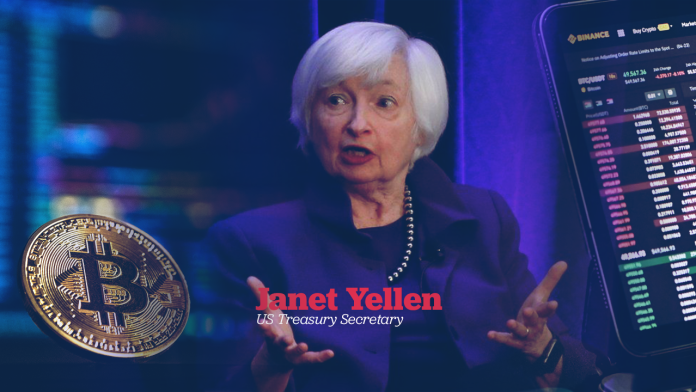Summary: The US Fed’s latest “Financial Stability Report,” released on 9th May amidst the crypto market meltdown of UST and LUNA, talked about the dangerous customer runs that stablecoins could bring to the economy.
TerraUSD (UST) lost its peg to the dollar for the second time in three days as government officials aired their worries about the industry in this latest report including treasury secretary Janet Yellen who called for regulations citing this event.
The report, which is a biannual publication issued by the Fed to analyze ongoing threats to the financial system’s stability, delivered a warning that the possibility of abrupt, panicked redemptions of stablecoins is similar to the risk of money-market fund runs as they are backed by assets that may lose value or become illiquid during stress.
“These vulnerabilities may be exacerbated by a lack of transparency regarding the riskiness and liquidity of assets backing stablecoins,” said the report while also pointing out that “the stablecoin sector remained highly concentrated, with the three largest stablecoin issuers—Tether, USD Coin, and Binance USD—constituting more than 80 percent of the total market value.”
It also said that “the increasing use of stablecoins to meet margin requirements for levered trading in other cryptocurrencies may amplify volatility in demand for stablecoins and heighten redemption risks.”
For example, when doing leveraged trading (a common type of margin trading) on an exchange like Binance on a BTC-based margin trade, an investor can use their USDT or any other stablecoin to denominate their collateral instead of only BTC.
The Reserve Primary Fund was one of the first retail money market funds to fall below $1 to $0.97 a share during the 2008 financial crisis. As a result, the entire sector shook, and the government stepped in to support the fund.
To address the concerns posed by stablecoins, the President’s Working Group on Financial Markets, the Federal Deposit Insurance Corporation, and the Office of the Comptroller of the Currency came up with the “Report on Stablecoins” in November 2021 in which they outline the risks and regulatory gaps along with several recommendations and interim measures.
The report points out several risks associated with stablecoins:
- Loss of value due to depletion of confidence in the stablecoin.
- Risks inherent to a payments system.
- Although stablecoins are decentralized, their rapid scale of adoption can potentially lead to concentration of power and the creation of several single points of failure.
- The different types of parties involved in a stablecoin arrangement and the operational complexity of these arrangements pose regulatory challenges.
The agencies recommended legislation to be passed by Congress to ensure that these stablecoins become subject to federal oversight on a regular basis. It goes on to provide guidelines on what kind of regulations it recommends like:
- Creating a federal framework for payment stablecoin arrangements for all involved entities like the stablecoin issuer and custodial wallet providers.
- Seek supervision, standards, and a federal safety net for stablecoin issuers by limiting issuance to insured depositories only and prohibiting other entities from doing so.
- Allow supervisors to have authority to implement standards to promote interoperability among stablecoins.
- Restrict custodial wallet providers from lending customer stablecoins and require compliance with appropriate risk-management, liquidity, and capital requirements.
- Limit affiliation with commercial entities or on use of user transaction data to address concerns of concentration of power.
- Provide appropriate agencies with examination and enforcement authority with respect to the stablecoin activities.
In the absence of such legislation, the report suggests that the agencies may consider the steps available to address risks falling within each agency’s jurisdiction. These agencies can also recommend that the Council designate certain activities as ‘systemically important’ such as payment, clearing, and settlement (PCS) activities, thus allowing the appropriate agency to enforce the existing framework.
If passed, these regulations could potentially mean the end of public, decentralized stablecoins as we know them. Perhaps that is the goal as the Fed is also mulling over introducing its own CBDC (Central Bank Digital Currency).






